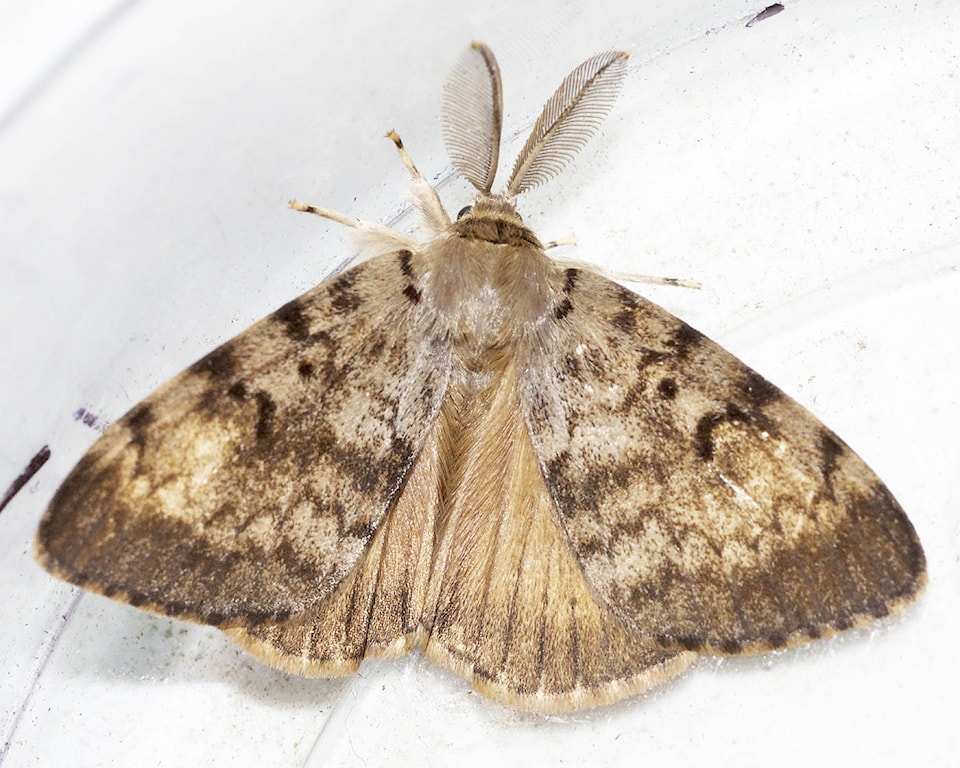Another local organization is adding its voice to the mounting opposition to the province’s proposed spraying for gypsy moths in Campbell River.
The city received word in late January that the province was planning on treating an area around the intersection of Rockland Road and Alder Street this spring with the insecticide Bacillus thuringuenisis kurstaki, as some of the moths – an invasive species in B.C. – had been found in traps in that area.
At their next public meeting, after the initial story about the treatment was printed in the Mirror, members of the Campbell River Environmental Committee (CREC) were on hand to question city staff on why this was going to be allowed, calling for city council to “stand up and tell the ministry that this isn’t appropriate for their city and their citizens,” CREC president Leona Adams said.
This week, the city received a letter from another community group concerned about the proposed upcoming spraying.
Richard Hagensen of the Campbell River chapter of the Council of Canadians says in his letter, addressed to Minister of Environment George Heyman and forwarded to the city, that the proposed spraying “infringes on citizens’ property and democratic rights.”
“Over the last few years, regulations regarding these spraying programs have been loosened, permitting ground spraying of a dangerous biocide on people’s private property despite their objections,” Hagensen writes.
He also questions the government’s assertions about the lack of adverse health affects on humans and other non-targeted animals.
“The biocide being used is a combination of 2.1 per cent live bacteria (Bt) and 97.9 per cent unknown ingredients being sprayed three times, 10 days apart by ground crews,” Hagensen says. “An independent study of the 97.9 per cent ‘unknown’ ingredients in this pesticide (which due to proprietary reasons are not disclosed to the public) shows it contains a number of compounds and acids that are known to be hazardous to human health depending on the amount used and degree of exposure to humans. The precautionary principle dictates that unless this biocide is proved to be harmless, it should not be approved for spraying of gypsy moths.”
Hagensen also says there are other ways of eradicating the invasive moths that are much less invasive and create less risk for the public.
“Using pheremone baited traps instead would be just as effective as spraying, would negate the risks to humans, wildlife and the ecosystem and could be acheived at a low cost, especially if volunteers from our community were used to carry out the setting up and monitoring of the traps,” Hagensen says.
Council received the Council of Canadians letter at Monday’s meeting and added it the agenda for discussion that was set to take place Tuesday afternoon at their Committee of the Whole meeting, where they decided to send a letter to the Ministry of Forests, Lands Natural Resource Operations and Rural Development requesting clarification on the provincial gypsy moth management initiative, including potential risks to human health, potential ecological impacts and the community engagement plan.
They have asked for a response to their questions from the ministry by March 26.
